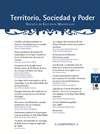Resumen
Resumen: El presente artículo trata de sintetizar el trabajo que el equipo de arqueología del Museo de la Minería del País Vasco iniciara en el 2001, cuya línea de investigación se centra en la paleometalurgia del hierro y en el análisis del territorio mediante un sistema de prospección abierto y coherente, que combina diversas estrategias de prospección arqueológica superficial. En la actualidad contamos con una metodología consolidada para realizar la carta arqueológica de las ferrerías de monte de Vizcaya.
Los resultados obtenidos en el trabajo de campo ponen de manifiesto la necesidad de redimensionar las variables comúnmente aceptadas hasta la fecha para la localización de estos talleres paleosiderúrgicos, así como la necesidad de plantear una estrategia de prospección audaz que sea capaz de cubrir sistemáticamente un territorio tan complicado y amplio como el que se propone.
Palabras clave: prospección superficial, metodología de prospección, arqueometalurgia, ferrerías de monte, carta arqueológica.
Abstract: The aim of this article is to summarize the work started by the Archaelogy Team of the Basque Country Mining Museum in 2001, whose researching line is focused on the iron paleometallurgy and on the land analysis, through an open and coherent survey method, combining different methods of archaelogical field survey. Nowadays, we have a consolidated methodology in order to do the Archaelogical Map of Mountain Foundries in Biscay.
We have achieved the aim of having designed an stable archaelogical survey method for an specific land: Biscay, and for a kind of specific site: the mountain foundries or “haizeolas”. The technics and different strategies we have used during the field work develop the method we chose since our starting.
A great effort has been realized in order to systematize annually two zones with different geographical features, and must be worked, so, in different ways. Taking into account that we are in a land where is almost impossible to do an orthodox survey method, we must use an open, coherent, effective and easy methodology, which will have to be able to adapt the intensity of the work in a zone, even after the theorical planification which has been realized previously.
So, different field survey strategies are used, depending on the different landscapes we find: combining intensive and extensive survey methods in some zones with extensive and selective ones in bigger areas, h as contributed the maximum coberture of the land, as well as its systematization thanks to previously well defined plannings.
Although the isolation of these installations has originated sites where is difficult to stablish which relationship maintained with the surrounding world of the time, we will try to resolve this problem through the field survey, as well as valorating the relationship they stablished with other places and with the nearest environment.
The catalogue of findings reveals us that, despite the distance, there are common samples in the ideal conditions for the settlement of the mountain foundries. The distribution map of this paleosiderurgical technology informs us of the neccesity of looking for landscapes where the iron, the vegetal combustible and the water are next to eac otherr. These features don´t have to be reflected in such an humanized landscape as actual, and don’t look to be conditionated by the winds.
One of the features of the investigations which have been achieved until now, is the hardness of the work, specially for being a humble and insulted site since the archaelogical sphere. In the same way, the same apellatives could be used to define the concept which is usually had about the capacity to interpret the field remains through an archaelogical survey. We confirm that the field survey in Biscay is extemelly hard, but is also true that the insistence and the results obtained until the moment by our team, invites to continue growing with the Archaelogical Map of Mountain Foundries in Biscay.
Anyway, banishing the preconceived ideas used to analyze the paleosiderurgy in the Basque Country until a short time algo, will take time, and it will be neccesary to concentrate efforts in exploring all the possible ways to spread our searching works.
Keywords: field survey, field survey methodology, archaeometallurgy, mountain foundries, archaeological map.

